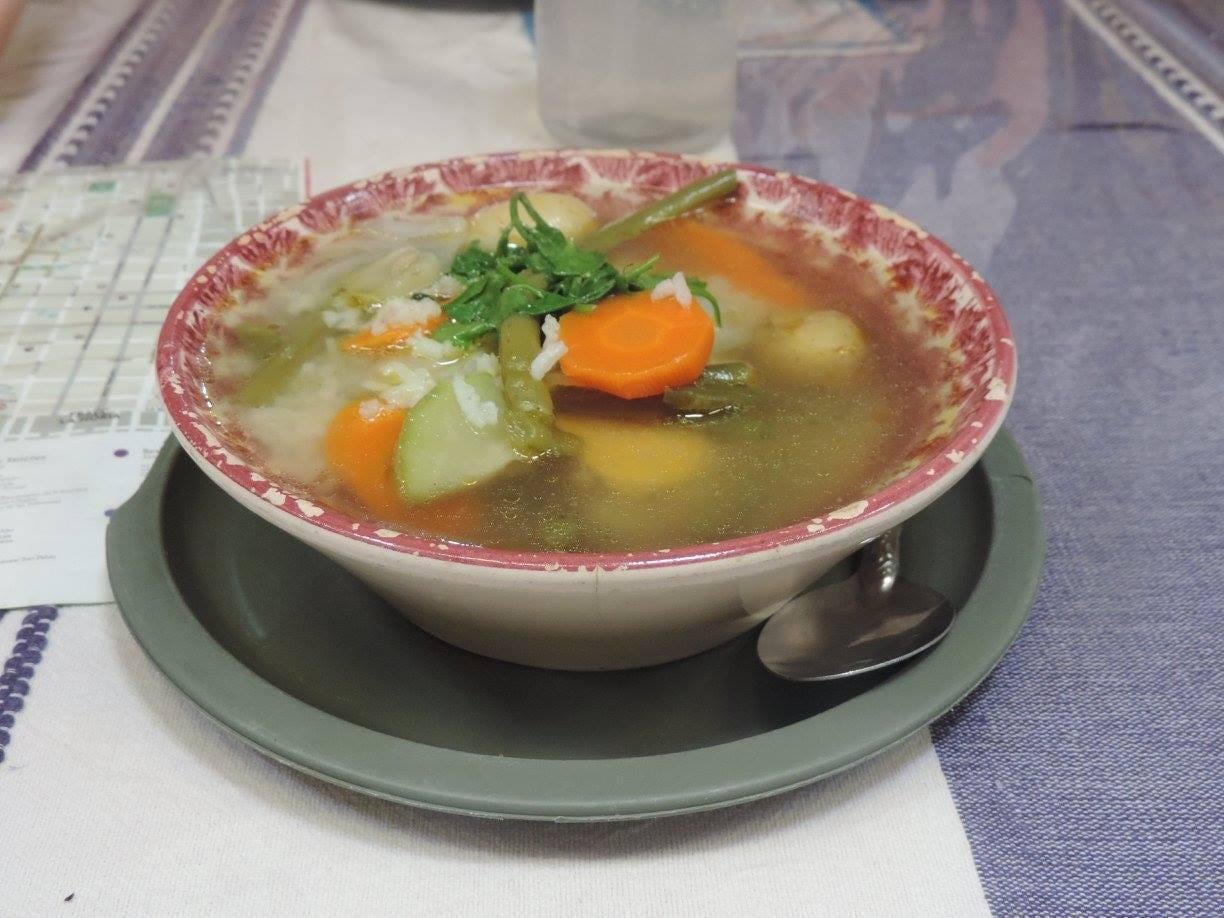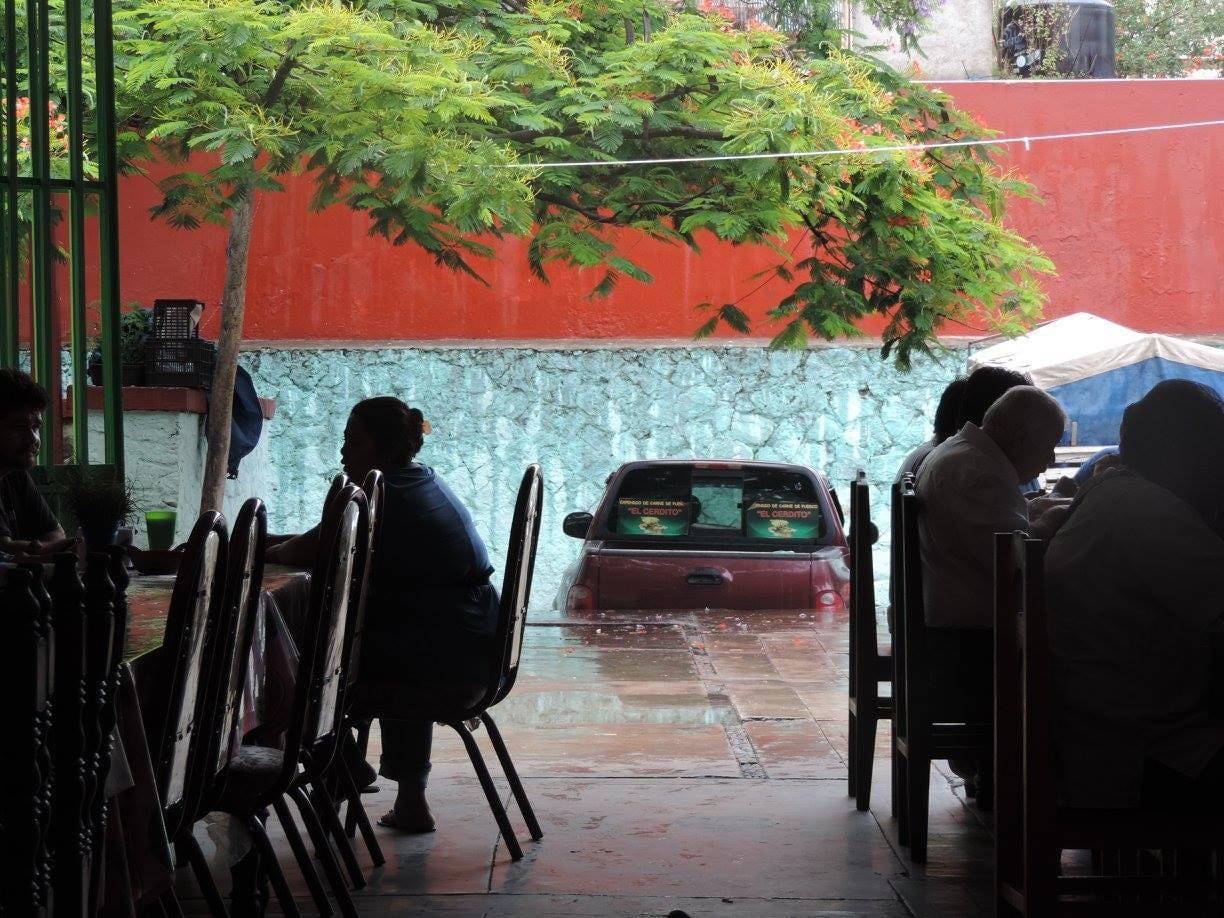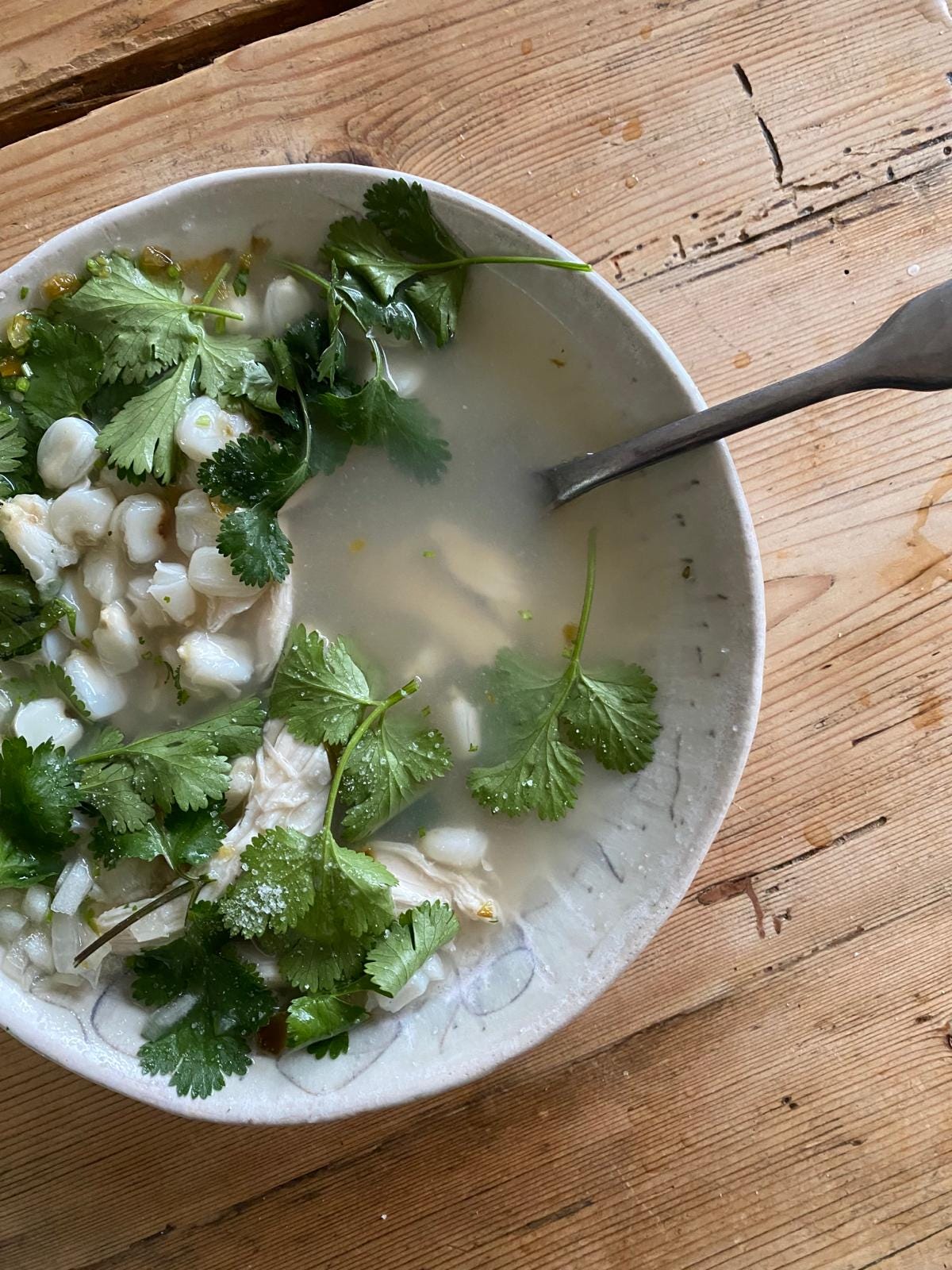Ómós Digest #129: Sopa de Lima
Recipe for an insanely refreshing broth and you don't have to travel far...
I’ve been on the hunt for a winter coat for a year now and finally happened upon one last week - just in time for the weather to take a sudden upturn. I now find myself in the perpetual state of putting on and removing layers, arriving in and out of meetings hot, flustered and unsure of what season it is. This is when Sopa de Lima comes in. Like a ceviche refreshes the senses on a hot summer’s day, this soup or broth touches the soul with its nourishing purity of a chicken broth, that contrasts wonderfully with the unexpected brightness of fresh lime juice, coriander and jalapeno. A refreshing bowl of goodness for interchangeable times. Just like a Vietnamese pho is not complete without noodles, this sopa contains hominy (chunky nuggets of nixtamalized corn) to deliver the addictive flavour and fulfilment of fresh masa, but in the shape of a satisfyingly chewy kernel. So revitalising is this dish, I had it again this morning for breakfast!
My introduction to Sopa de Lima was in a small town market in Central Tabasco in Mexico. There was no menu so to speak and upon sitting down at a shared table, I was offered a steaming broth served with an equally steaming tortillero, full to the brim. I recall feeling bemused by the prospect of a dish of this kind in sweltering weather. However, when guided to squeeze lime juice into the broth, along with finely diced white onion, sliced chillies and the leaves and stems of fresh coriander, what materialised was something utterly transformative. A hearty bone broth suddenly became both refreshing and refined. That was my first introduction to the curiously delicious world of sour soups… Later, on a trip to Romania I discovered Borș, an opaque liquid derived from fermented grains, traditionally used to season soups and broths, as if it were lemon juice. Meanwhile in Thailand, despite the perpetual humidity, steaming hot soups are consumed year-round. The hot and sour soup Tom Yum is a dish of great acclaim and significance in Thailand’s sprawling culinary repertoire. While we might assume that broths and soups containing high volumes of acid were a delicacy one must travel for, on a recent trip to visit bladesmith and cheesemonger (he does so much more) Fingal Ferguson, in West Cork, I was offered a seat at his farmhouse table and a bowl of lemon, chicken and rice soup which had been happily simmering away on the stove all afternoon. Just as I was amazed by the role of the lime in that debut spoonful of Sopa de Lima, I was taken aback by the heavy-handed application of lemon juice in Fingal’s cauldron on Ireland’s West coast. The mouth-puckering acidity contrasted so well with the starchy and wholesome broth.
What is hominy?
My fiancé’s mother hails from New Mexico, where hominy is commonly used in soups and broths; the most famous of them all being Pozole. Unlike the recipe below, which is clear, New Mexican Pozoles are typically tainted red or green from the addition of soaked dried chillies and/or tomatoes. They contain braised meat (typically pork) and an array of vegetables, but most important of all, hominy. Hominy is maize (corn) kernels that have been treated with an alkali, usually lye or a lime solution. In order to make tortillas, corn must be turned into hominy. This ancient practice, known as nixtamalization, involves soaking the corn in an alkaline solution, which softens the hulls and makes the kernels easier to grind and stick together like a masa. The result is larger, softer, and more easily digestible corn kernels. The nixtamalization process not only changes the texture and flavour of the corn, but also increases its nutritional value by making certain nutrients more bioavailable. That addictive flavour we associate with fresh masa is of course found in fresh hominy too. I personally buy my hominy canned in groceries (Lotts & Co in Dublin). If locating hominy is a struggle, instead you can use cooked rice or canned corn, or try frying strips of fresh tortilla and topping the broth with them. I urge you though to try sourcing hominy. Its incomparable flavour and texture is worth the search.
SOPA DE LIMA
For this recipe I typically make my stock from scratch, using the chicken I intend to eat. This economical approach means I cook the chicken as I make the broth. You can also prepare the broth in advance and poach the chicken breasts in that stock.






